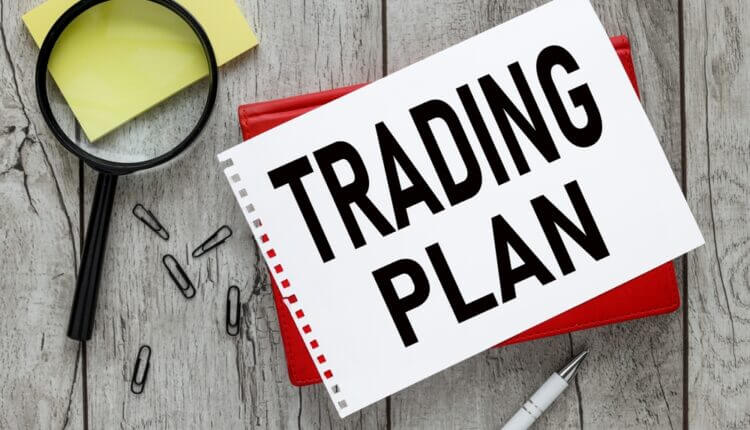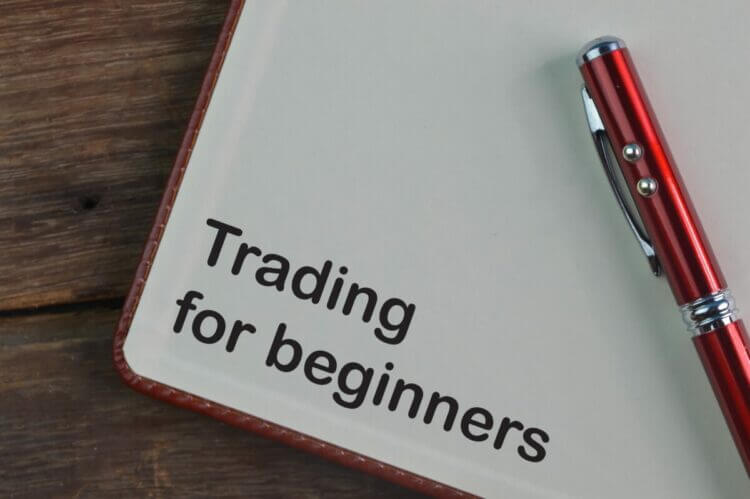
Trading for Beginners: Where to Start?
Financial literacy is more important than ever in today’s world. By using the resources at your disposal, you can learn how to grow your money and assets. For new investors, learning trading strategies is crucial to building a solid foundation in their personal forex journey. Let’s explore the basics of trading for beginners and set you on the path to financial success!
Forex ketket: Defining Trading
Forex trading is also known as foreign exchange trading or FX. The forex market is the largest financial market globally, with a daily currency flow of $6-7.5 trillion. This amount exceeds the stock market.
Via electronic networks, it runs continuously throughout the world. Besides, the system enables traders to predict changes in currency prices that are impacted by market speculation, geopolitical events, and economic considerations.
With $6-7.5 trillion in daily global currency flow, the forex market surpassed the stock market as the largest financial market in the world. Numerous new traders have been attracted to online currency trading due to its convenience.
The Exchange Process: Automated Trading for Beginners
Currency trading takes place in the foreign exchange market, which is distinguished by the absence of a central marketplace. International traders transact electronically over-the-counter (OTC) via computer networks. Prominent financial hubs such as Frankfurt, Hong Kong, London, New York, Paris, Singapore, Sydney, Tokyo, and Zurich enable round-the-clock trading five days a week. Thereby guaranteeing continuous fluctuations in prices.
One of the special characteristics of financial markets is that the currency market is open twenty-four hours a day, seven days a week. Factually, institutional corporations and big banks have historically controlled it. However, ordinary traders and investors now have more access to it. All aside, the surge in new traders has drawn con artists who prey on unsophisticated investors.
Where and Who? Forex Market Location and Active Traders
Forex trading is conducted through linked trading terminals and computer networks rather than physical locations. Worldwide retail investors, commercial banks, investment banks, and institutions are among the participants.
Because of the high capital requirements, forex trading was initially restricted to major firms, hedge funds, and affluent individuals. Although professional and private traders can still trade currencies, most forex trading is still handled by commercial and investment banks for their clients.
Making money off of shifts in the value of currency pairs is the goal of forex trading. For example, you may purchase euros with dollars if you anticipate that the euro growing in value relative to the US dollar. You can profitably sell the euros for more dollars if their value rises.
Hedging, Liquidity, and Global Market Influences
Hedging is another purpose for forex trading. Both people and companies use it as protection against unfavourable currency fluctuations. To reduce any losses from exchange rate swings, for instance, a global business may employ forex trading.
By acquiring advantageous rates ahead of time, they may guarantee steady expenses in their home currency. This is an essential practice for modern multinational businesses.
Due to the tremendous liquidity of forex trading, buying and selling huge sums of currency is simple and doesn’t significantly impact its value. Leverage allows traders to hold large positions with little capital outlays, but it also magnifies losses, emphasizing the importance of strategy, knowledge, and risk awareness.
Since the currency market is worldwide, world events impact it. Currency prices can be influenced by economic variables such as inflation, interest rates, economic development, and geopolitical stability. A nation’s currency may appreciate, for instance, if its central bank raises interest rates due to better investment returns.
On the other hand, weak economic development or political unpredictability can cause a currency to weaken. Thus, changes in the world economy and politics are reflected in forex trading.
How to Start Trading for Beginners
While taking your first steps, it is important to learn about the basic concepts of forex thoroughly. Those consist of terminology, currency pairs, market patterns, and factors affecting currency prices.
After getting familiar with the basics, it is time to start developing a trading strategy. Explore various trading strategies, including technical analysis, fundamental analysis, and news trading. That will help the novice trader create an effective trading plan.
Outlining the goals and criteria for evaluating trades are the key factors to a successful day trading for beginners. Unquestionably, sticking to your plan will provide solutions to handling high-pressure situations.
The next groundwork step is setting up a brokerage account. Choose a broker regulated by a reputable financial authority like the Commodities Futures Trading Commission (CFTC) in the US Ensure the broker offers a user-friendly trading platform, good customer support, and low fees.
Trading for Beginners: Staying on Top of Your Holdings
Nowadays, forex exchanges provide users with an option of demo version trading accounts. In order to get familiar with the structure of any chosen brokerage platform, practice with a demo account first. Therefore, you can test your strategies and identify mistakes without risking real money. Using a demo account is a good idea before you start more advanced trading in real time with higher risks.
It is crucial to start slowly. Begin trading with real money once confident, but start with small amounts to manage risk. Once familiar, you can increase your trading size as you gain experience.
One of the most effective and practical ways to enrol in the trading world is to use safe methods that have demonstrated trustworthiness throughout time. For example, the ‘Monitoring and Adapting’ method means keeping up with economic indicators and geopolitical events that could impact currency prices.
Regularly monitor your positions and maintain sufficient funds in your account. Use stop-loss and take-profit orders to manage risk and protect profits. Be ready to adjust your strategies as market conditions change, but avoid overreacting to every price movement.
Types of Markets
Forex trading occurs primarily in three markets: spot, forwards, and futures. The spot market is the largest and forms the basis for the forwards and futures markets. When people refer to the forex market, they typically mean the spot market.
Spot Market
In the spot market, currencies are bought and sold based on their current trading price, determined by supply and demand, interest rates, economic performance, geopolitical events, and price speculation. A completed deal in the spot market is known as a spot deal. In this bilateral transaction, one party exchanges a specific amount of one currency for another at an agreed rate. These transactions are settled in cash within two days.
Forwards and Futures Markets
Forward contracts are private agreements to buy a currency at a future date for a predetermined price in OTC markets. Futures contracts operate on the same principle but are standardized and traded on exchanges like the Chicago Mercantile Exchange (CME). Futures contracts have fixed sizes, settlement dates, and price increments. Both forwards and futures contracts are binding, usually settled in cash at expiry, but they can be traded before expiry, offering risk protection when trading.
Options Contracts
Options contracts are also traded on specific currency pairs. Forex options give the holder the right, but not the obligation, to buy or sell a currency pair at a specified price on a specified date.
Depending on the difference in interest rates between the two currencies, you can either gain or pay interest when keeping a currency pair position overnight. You will receive interest if the currency you purchased has a greater interest rate than the one you sold. A carry trade is the name given to this tactic.
Exchange Rate Profit
Purchasing a currency pair when you anticipate a rise in the exchange rate and selling it when you anticipate a fall in the rate will allow you to profit from fluctuations in the market. The difference between your entry and exit pricing determines your profit or loss.
Investing vs. Trading for Beginners
There are two unique ways to participate in the financial markets: trading and investing. Trading and investing have different objectives and methodologies. Investing usually has a long-term perspective with the aim of progressively increasing wealth over time.
The investing’s goal is earning regular income through dividends or interest payments. Besides, it targets the continuous appreciation of the asset’s value. That way, investors may keep assets for months, years, or even decades.
Trading, on the other hand, takes a more immediate investment strategy. This principle seeks to make money through regular asset purchases and sales. Traders may hold positions for a few seconds (scalping), minutes, hours (day trading), or days to weeks (swing trading) to gain profit from short-term market patterns. While looking for trading opportunities, they frequently use technical analysis, examining charts and trends.
Risk Management Strategies for Beginners

Risk management is crucial for beginners entering the trading world to protect their capital and ensure long-term success. Here are essential strategies to consider:
- Set Stop-Loss Orders: Limit potential losses by setting automatic stop-loss orders to close trades at predetermined price levels.
- Diversify Investments: Spread investments across various asset classes and currency pairs to mitigate risk.
- Use Proper Position Sizing: Base position sizes on risk tolerance and capital to avoid over-leveraging.
- Employ Risk-Reward Ratios: Aim for trades with a favorable risk-reward ratio, where potential rewards outweigh risks.
- Stay Informed with Fundamental Analysis: Use economic indicators, news, and geopolitical factors to make informed trading decisions.
- Utilise Technical Analysis: Analyse charts and patterns to identify entry and exit points, timing trades with support and resistance levels.
- Monitor and Adjust Strategies: Regularly review and adjust trading strategies to adapt to changing market conditions, avoiding impulsive decisions.
Implementing these risk management strategies can help you navigate the complexities of trading while minimising potential losses and maximising long-term profitability.
Common Pitfalls to Avoid in Trading for Beginners
Navigating the trading world as a beginner requires careful avoidance of common pitfalls. One crucial mistake is over-leveraging, where excessive use of borrowed funds amplifies gains and losses, risking more than you can afford. Ignoring stop-loss orders is another pitfall, leaving you vulnerable to significant losses if trades move against you unexpectedly.
Chasing losses by making impulsive trades to recover previous losses can further exacerbate financial setbacks. Effective risk management is key; without a clear strategy, such as diversification and setting stop-loss orders, you increase the likelihood of substantial losses.
Overtrading, driven by emotional impulses rather than strategic analysis, can lead to poor decision-making and unnecessary transaction costs. It’s also important to stay informed about market trends and economic conditions to adapt your strategies accordingly and avoid missed opportunities or losses. Lastly, maintaining discipline, patience, and continuous learning is crucial to avoid common pitfalls and improve your trading skills over time.
Final Advice Before You Step Into Trading
Embarking on your journey into trading as a beginner opens up a world of possibilities and challenges. By understanding the fundamentals and mastering key strategies like risk management and market data analysis, you’re laying a solid foundation for success. Effective trading requires using your knowledge of trading systems that incorporate stop losses to manage risk on the exchange. The bottom line is to safeguard investments and optimize returns in volatile markets.
Remember, trading is not just about making profits; it’s a continuous learning process that requires patience, discipline, and adaptability. Stay curious, stay informed, and, most importantly, enjoy the thrill of learning and growing in the dynamic world of trading. With dedication and the right approach, your journey into trading holds the potential for exciting opportunities and rewarding outcomes.
The post Trading for Beginners: Where to Start? appeared first on FinanceBrokerage.

